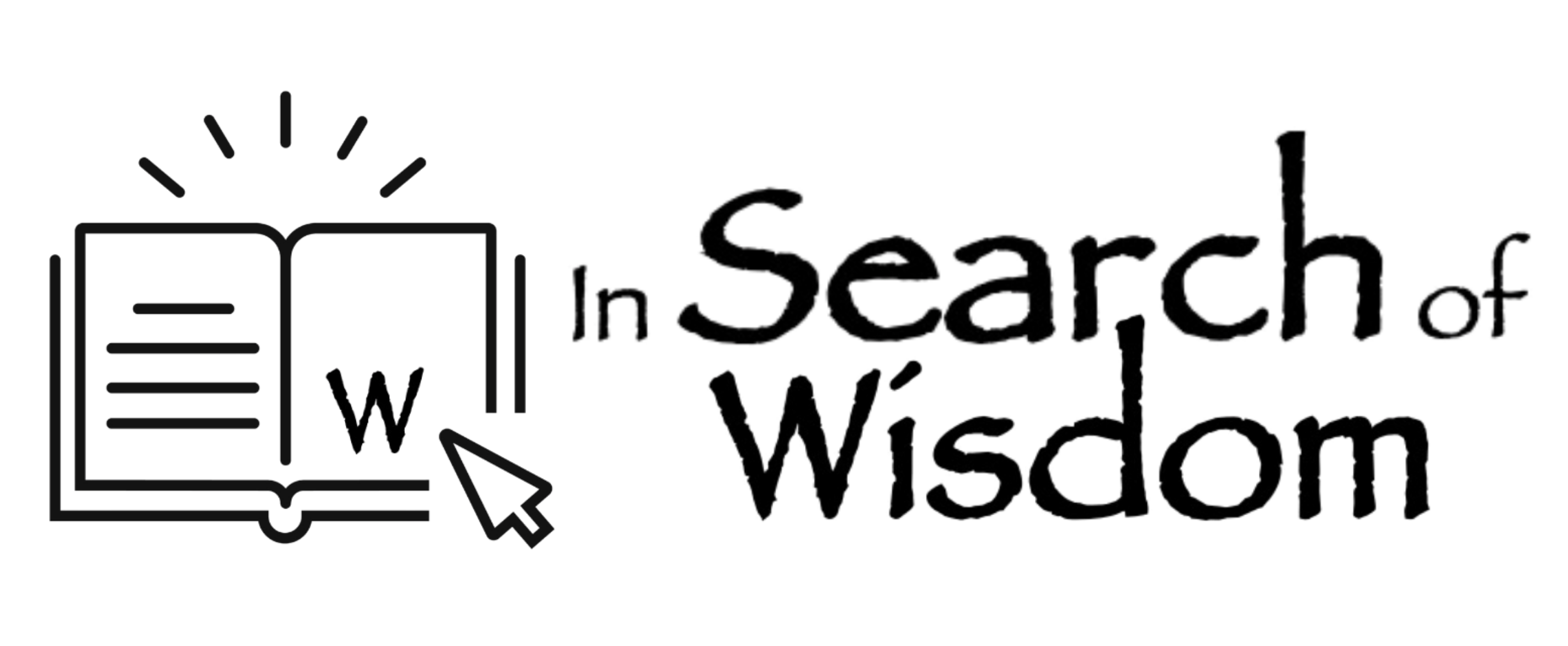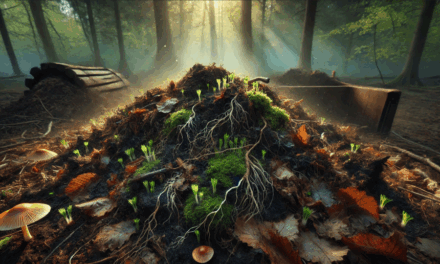A Synthesis of Historical Pattern, Mathematical Mechanism, and Developmental Wisdom.
This essay continues a thread begun in The Voice Struggling to Be Heard. That piece named the ontological fracture. This one charts the path beyond it. If you’re arriving here fresh, you may wish to begin there—but if you’re ready to step into the maturation challenge, welcome.
Opening – The Threshold We’ve Reached
In 2023, a group of seniors at our local u3a (University of the Third Age) began a two-year journey to understand how humanity arrived at this moment of converging crises. We weren’t looking to condemn or celebrate our heritage, but to see it whole—to understand the pattern we’re living within.
What emerged wasn’t what any of us expected. We discovered that humanity stands at a threshold familiar to anyone who has raised children or remembered their own coming of age: the transition from adolescence to maturity.
For 10,000 years, we’ve been exploring what symbolic intelligence can do—building cities, creating technologies, pushing boundaries, testing limits. This exploration was necessary. You can’t mature without leaving home, without discovering your capacities, without testing what’s possible.
But every adolescent phase must either mature or collapse under its own contradictions. And the evidence—historical, mathematical, and philosophical—shows we’ve reached that threshold.
This essay synthesizes what three independent lines of inquiry reveal about the maturation challenge we face. Not as judgment of what we’ve done wrong, but as recognition of what the next developmental stage requires.
Part One – The Pattern History Reveals (What Happens When Growth Doesn’t Mature)
The 324 Teaching Stories
When Cambridge scholar Luke Kemp analysed 324 cases of societal collapse spanning 5,000 years—from Bronze Age kingdoms to modern failed states—he discovered something remarkable: the same developmental pattern recurring across radically different cultures and time periods.
He calls these systems “Goliaths”—societies built on domination hierarchies that appeared overwhelmingly powerful yet proved terrifyingly fragile. The name captures both their imposing strength and their inevitable vulnerability.
These weren’t aberrations of particular cultures but examples of what happens when a growth phase continues past its sustainable limit without maturing into a new organizational form.
The Growth Phase Pattern
All Goliaths followed a recognizable trajectory:
Early success: Discovering they could extract surplus from beyond local territories, concentrate populations, build monuments, extend control. This felt like achievement, progress, proof of exceptional capability.
Acceleration: Success breeding confidence, extraction increasing, hierarchies deepening, territories expanding. The system seeming to validate itself through continued growth.
Hollowing: Elites extracting more, competition among rulers intensifying, environmental degradation accumulating, populations experiencing increasing hardship, institutions becoming rigid, decision-making increasingly disconnected from consequences.
Crisis: Shocks striking an already weakened system—disease, climate shifts, invasions, resource collapse. Not the cause of breakdown but the trigger revealing underlying fragility.
Reorganization: Sometimes violent collapse, sometimes gradual dissolution, occasionally managed transformation. But always: the end of the growth phase and transition to something else.
The Surprising Lesson
Here’s what challenges our assumptions: these collapses “were written up as apocalyptic, but were probably better for most people.” For the average person, collapse often meant smaller tribute demands, more local autonomy, less warfare, escape from elite extraction.
This isn’t romanticizing collapse—it was chaotic and people suffered. But it reveals something crucial: the systems that seemed to prove civilization’s success were actually holding most people back from flourishing.
The growth phase served elites magnificently. It served most people poorly. When it ended, life often improved for the majority.
Why This Pattern Matters
The pattern’s consistency across 5,000 years and radically different cultures suggests we’re not looking at cultural accidents or particular failures. We’re looking at a developmental stage that runs its course predictably when certain conditions exist.
More importantly for our moment: we now live in the first truly planetary system. Previous Goliaths collapsed regionally—Rome fell while China continued. Today’s interconnected civilization has eliminated the outside. When this growth phase ends, there’s nowhere to collapse into.
The question isn’t whether our growth phase will end. It’s whether we’ll mature consciously or be forced to reorganize through collapse.
Part Two – The Mechanism (Understanding What We Must Learn to Channel)
From Pattern to Process
History shows the pattern repeating. But understanding why requires mathematics. This is where Peter Turchin’s work becomes essential.
Turchin, a complexity scientist, founded “cliodynamics”—treating historical data mathematically to reveal the mechanisms driving social dynamics. In 2010, his models predicted American social instability would peak around 2020. The accuracy of that decade-old forecast demonstrates these models capture something real.
The Wealth Pump Mechanism
At the heart of these dynamics is what Turchin calls “the wealth pump”—the process that extracts resources from many to enrich few. This isn’t metaphor but measurable mechanism with predictable dynamics.
The pump operates when:
- Popular immiseration: Real wages decline, life expectancy falls, economic mobility contracts
- Elite overproduction: More credentialed aspirants than elite positions available, creating frustrated class with skills to organize but no stake in maintaining current system
These two dynamics interact: elites compete for positions by extracting more from below, immiserated populations provide recruits for counter-elite movements, competition intensifies, instability accelerates.
Turchin’s models show societies entering this “death spiral” become locked in dynamics very difficult to exit without major transformation or collapse.
But There’s Hope in the Mechanism
Here’s what makes this more than sophisticated doom-saying: societies have successfully navigated this challenge. “There have been examples where elites have recognized the danger of social disintegration and have taken action to avert it.”
Post-World War II social democracy in Europe, New Deal reforms in America, various historical examples of choosing reform over collapse—all demonstrate the pattern isn’t deterministic.
What worked historically: “returning power to workers and allowing them to organize” to “shut down the wealth pump.” Not perfect equality (neither realistic nor necessary) but fairness: “wages should be linked to productivity.”
The mechanism reveals what maturation requires: not suppressing human drives but structuring systems so those drives don’t generate extraction beyond regeneration.
Part Three – The Biological Root (The Drive We Must Learn to Channel)
The Adaptive Response
Here’s where we must look even deeper than history or mathematics—to evolutionary biology.
Animals in environments where critical nutrients are scarce have evolved an adaptive response: when rare resources become available, consume excess. Store it as body fat or cached food. This increases survival when scarcity returns.
This works beautifully because:
- Scarcity is real (nutrients genuinely rare)
- Storage is limited (can only get so fat, cache so much)
- Consequences are immediate (overeat and you’re vulnerable)
- Population self-regulates (carrying capacity limits total consumption)
Deer travel miles to salt licks. Bears gorge before hibernation. This isn’t greed—it’s adaptive behaviour in environments where scarcity reliably returns.
Humans inherited this same drive. When rare nutrients are available, we’re biologically wired to take excess.
What Symbolic Intelligence Changed
But symbolic intelligence enabled something unprecedented: removing the scarcity that kept this drive in check.
Through agriculture, storage technology, trade, and eventually money (abstract storage that never decays), humans eliminated the scarcity that shaped the accumulation drive.
The result: A biological response adaptive in scarcity continuing to operate in abundance.
The regulatory loop that worked for millions of years broke:
- Natural: Take excess when scarce → store in limited ways → scarcity returns → storage depletes → cycle repeats
- Override: Remove scarcity → drive continues → store symbolically (unlimited) → scarcity never returns → accumulation accelerates infinitely
This is what contemplative traditions called “greed” and what Adam Smith made central to economics: the same phenomenon viewed from inside versus outside the pattern.
The Scarcity Override
Greed isn’t moral failing or cultural corruption. It’s an adaptive biological drive operating in absence of the regulatory constraints that evolved with it.
This is simultaneously:
- What enabled civilization (surplus accumulation, city building, technological development)
- What generates extraction (taking beyond regeneration)
- What drives current crisis (infinite growth assumption on finite planet)
And most importantly: It’s what we must learn to consciously channel if maturation is to succeed.
Why This Changes Everything
Understanding the biological root transforms the challenge:
Not: Condemn or suppress greed (impossible—it’s evolutionary)
But: Consciously create cultural structures that channel this drive toward regenerative rather than extractive ends
Not: Transcend our animal nature (separation fantasy)
But: Work intelligently with our evolved drives, structuring systems that redirect them sustainably
Not: Return to scarcity (suffering and death)
But: Maintain abundance while building cultural constraints that do what natural scarcity did automatically
This is humanity’s great work: Learning to consciously channel our evolved biological drives within the constraints that enable all life to flourish.
Part Four – What Indigenous Cultures Discovered (Proof That Maturation Is Possible)
The Cultures That Matured
The challenge we face isn’t unprecedented at the individual culture level. Many societies developed sophisticated ways to channel the accumulation drive sustainably.
Indigenous North American confederacies, Pueblo peoples, many African and Pacific societies—all achieved:
- Complex social organization
- Accumulated knowledge across generations
- Artistic and spiritual sophistication
- Technological adaptation to environments
But not Goliath dynamics. Not extraction-based hierarchy. Not wealth pumps generating collapse.
How They Did It
Not through genetic difference or primitive simplicity, but through sophisticated cultural technology:
Potlatch ceremonies: Regular redistribution preventing accumulation. Status gained through giving away, not hoarding.
Gift economies: Wealth flows through you, doesn’t stick to you. Accumulation brings shame, not prestige.
Commons management: Resources shared rather than owned. Use rights rather than property rights.
Usury prohibitions: Money/wealth can’t reproduce itself through lending.
Jubilee years: Periodic debt forgiveness, land redistribution, resetting of relationships.
These weren’t naive or primitive. They were conscious cultural structures that channelled the biological accumulation drive away from unsustainable override.
What They Understood
These cultures recognized something modern civilization has forgotten: the drive to accumulate excess when scarce resources are available is always present in humans.
Rather than pretending it doesn’t exist or trying to suppress it through willpower, they built institutional and cultural structures that made accumulation pointless or impossible.
- Can’t gain status by hoarding when status comes from giving
- Can’t pass accumulated wealth when jubilee years reset everything
- Can’t extract from commons when they’re collectively managed
- Can’t separate from consequences when you live embedded in affected community
This is mature relationship with the accumulation drive: Not denying it exists, not glorifying it as virtue, but channelling it through structures that maintain sustainability.
Part Five – The Converging Evidence (Why This Isn’t Just Theory)
When Independent Lines Meet
In science, the gold standard isn’t a single proof but consilience—when multiple independent investigations starting from different places all point toward the same conclusion.
This is what we have here:
Historical (Kemp): 324 cases across 5,000 years showing extraction-based growth phases reliably end in reorganization
Mathematical (Turchin): Predictive models revealing the wealth pump mechanism and its instability dynamics
Biological: Evolutionary understanding of adaptive responses to scarcity and what happens when regulatory constraints are removed
Cultural: Indigenous examples proving sustainable channelling of accumulation drives is possible
Philosophical: Process thought revealing why separation from regulatory feedback generates violation
Each line could be wrong. But the probability they’re all wrong in ways that perfectly align to create a false pattern approaches zero.
What the Convergence Reveals
The pattern we’re living in isn’t:
- Unique to capitalism (it’s older and broader)
- Western civilization’s fault alone (it emerged independently across cultures)
- Inevitable human nature (cultures successfully organized differently)
- Recently discovered problem (contemplatives recognized it millennia ago)
The pattern is:
- A developmental stage (adolescent exploration of symbolic intelligence)
- That runs a predictable course (growth → extraction → instability)
- Unless consciously matured (through cultural structures channelling drives sustainably)
- Which is possible (indigenous cultures prove it)
- But urgent (planetary scale leaves no outside)
Strong Evidence, Not Certainty
We’re not claiming mathematical proof of what will happen. Civilizational-scale questions don’t permit controlled experiments.
But we have strong evidence—the strongest available—that:
- Continuing growth-phase dynamics leads toward reorganization (willing or forced)
- The accumulation drive operates in all humans (evolutionary biology)
- Cultural structures can successfully channel this drive (historical examples)
- Maturation requires conscious choice (it doesn’t happen automatically)
- The window for choosing is closing (convergent crises accelerating)
This is sufficient grounds for engagement with the maturation challenge.
Part Six – The Choice Point (What This Moment Requires)
Where We Stand
By Turchin’s mathematical models, we’re not approaching crisis—we’re inside it. The “twin forces pushing America into civil war—immiseration and elite overproduction—continue unabated.”
By Kemp’s historical analysis, we’re living inside the first truly planetary Goliath, with “nuclear war, climate change, and existential risks” threatening global rather than regional reorganization.
By biological understanding, we’re operating with scarcity override fully engaged at planetary scale, extracting from future and distant places to maintain present consumption.
But by developmental understanding, we’re at a threshold all maturing beings face: Will we consciously grow into the next stage, or will we be forced into reorganization by accumulated consequences?
The Three Paths
Path 1: Continue the Growth Phase
Pretend maturation isn’t necessary. Assume technology will transcend limits. Believe this time is different from all 324 historical examples.
This path leads where it always has: toward reorganization forced by overwhelming instability. Not because we’re bad people, but because growth phases that don’t mature generate their own ending.
Path 2: Despair and Resignation
Accept that maturation is needed but believe it’s impossible given the momentum, the path-dependencies, the captured institutions, the time constraints.
This path guarantees the outcome it fears through self-fulfilling prophecy. Resignation enables continuation, which generates the collapse resignation predicted.
Path 3: Conscious Maturation
Recognize the developmental threshold and engage actively with what maturation requires. Not with certainty of success, but with clear understanding of what the next stage demands.
This path offers no guarantees. But it’s the only one consistent with the evidence we have about how living systems navigate developmental thresholds.
What Maturation Actually Requires
Not: Returning to hunter-gatherer existence (regression, not maturation)
Not: Abandoning symbolic intelligence or technology (losing the gifts of adolescence)
Not: Suppressing the accumulation drive (impossible and unnecessary)
But:
Consciously creating cultural structures that channel our evolved drives toward regenerative rather than extractive ends while retaining the gifts symbolic intelligence enabled.
This means:
Shutting down the wealth pump through distributed power and stakeholder governance, so productivity gains are shared rather than concentrated.
Restoring regulatory feedback by embedding decision-makers within consequences of their decisions, operating on timescales matched to system dynamics.
Redefining success from accumulation/consumption to contribution/relationship, making status flow from giving rather than having.
Honouring elders who model mature participation rather than exiling them to consumption-only retirement.
Accepting mortality as essential rather than transcending it as ultimate limit-override.
Channelling technology toward regeneration rather than extraction, using our tools to enhance participation rather than enable separation.
Part Seven – The Great Work in Practice (What Maturation Looks Like)
The Participatory Principle
If maturation means consciously re-embedding symbolic intelligence within participatory relationship, then transformation happens through changing how we participate in patterns, not through implementing plans from outside them.
This shifts the fundamental question:
Not: “What should be done?” (separation thinking)
But: “How do I participate differently in the patterns I’m already part of?”
Four Domains of Practice
Individual Practice: The Foundation
- Consciousness work: Practices revealing how symbolic intelligence creates separation—meditation, time in nature, contemplative inquiry
- Consumption patterns: Every purchase participates in extractive or regenerative systems
- Relationship quality: How you listen, conflict, cooperate, forgive teaches these capacities to others
- Embodied presence: Practices reconnecting with biological intelligence—movement, intimacy, seasonal awareness
Not self-improvement project but conscious participation in pattern-shift.
Community Building: The Multiplier
- Intentional proximity: Cohousing, ecovillages, neighbourhood gatherings where relationships are regular and embodied
- Participatory governance: Citizens’ assemblies, consensus processes, sociocracy—methods distributing power while enabling coherent action
- Economic alternatives: Cooperatives, time banks, mutual aid networks, commons management
- Cultural transmission: What gets celebrated, normalized, passed to next generation
Not lifestyle choice but cultural technology for resilience.
Institutional Reform: The Leverage
- Worker organization: Unions, cooperatives, stakeholder governance—returning power to those doing the work
- Governance transformation: Citizens’ assemblies, participatory budgeting, bioregional coordination
- Corporate restructuring: B-corporations, benefit corporations, structures requiring stakeholder benefit
- Knowledge system evolution: Integrating indigenous wisdom, contemplative inquiry, participatory research
Not better management but structural redesign.
Cultural Narrative: The Container
- Story and art: Creating visions of mature participation, making relational intelligence visible
- Ritual and symbol: Celebrations recognizing interdependence, practices making networks visible
- Education redesign: Collaborative learning, knowledge as participation, success as contribution
- Elder wisdom: Transmitting long-view perspective, modelling contentment, teaching sufficiency
Not propaganda but authentic exploration of what mature participation enables.
Integration Across Scales
These domains reinforce each other:
Individual practice makes community possible → Community enables institutional challenge → Institutional reform creates space for practice → Cultural narrative holds the container
The work happens simultaneously at all scales, with those positioned differently contributing what they can.
What You Can Actually Do
If you have capital: Invest in regeneration—cooperatives, B-corps, community land trusts
If you have skills: Create for collective benefit, teach freely, build for regeneration
If you have platform: Amplify relational patterns, challenge separation narratives, connect people
If you have time: Show up for community, participate in governance, learn facilitation
If you have land: Practice regeneration, manage as commons, host community
If you have voice: Speak pattern-truth, name separation, celebrate relationship, encourage maturation
For everyone: Meet each moment with consciousness rather than unconsciousness, participation rather than separation, courage rather than fear, generosity rather than hoarding.
None of this is pure. We’re all embedded in extractive systems. The question isn’t purity but direction—are your choices moving toward relationship or toward separation?
The Practice of Not Knowing
One crucial principle: epistemic humility about outcomes.
We don’t know if transformation is possible at required scale and speed. We don’t know if experiments in regenerative culture can seed what emerges from breakdown.
What we do know:
- Continuing growth phase leads to reorganization (324 historical cases)
- The mechanisms generating instability operate now (mathematical models)
- Maturation requires embedding symbolic intelligence within participatory wisdom (ontological diagnosis)
- Practices aligned with relational reality work better than those violating it (consilient evidence)
This is sufficient for engagement even without certainty about outcomes.
The practice: Act from strongest evidence available while remaining open to what emerges. Hold direction firmly while holding outcomes lightly. Choose relationship over separation in each moment while accepting you can’t control what that generates system-wide.
Part Eight – The Sacred Foundation Becomes The Great Work
What Contemplatives Saw
Every major contemplative tradition identified greed as fundamental poison:
- Buddhist: tanha (craving)
- Christian: avarice
- Islamic: hirs
- Hindu: lobha
They recognized greed as the subjective experience of separation consciousness—believing you’re fundamentally alone, must accumulate for security, can find satisfaction through possession.
What Economics Enshrined
Adam Smith observed that within systems organized around separation, self-interest coordinates behaviour. The invisible hand genuinely works—within systems already structured to reward accumulation.
But Smith mistake contingent observation for universal human nature.
The Integration
Both were right about what they observed:
Contemplatives: Greed generates suffering when it operates unchecked
Economics: Self-interest coordinates behaviour within certain institutional structures
What neither fully acknowledged: The accumulation drive is biological (adaptive response to scarcity), not moral failing or economic law. And like all biological drives, it can be channelled through cultural structure.
Humanity’s Great Work
Not: Condemning greed as evil (it’s biological)
Not: Celebrating greed as virtue (it’s adaptive only in scarcity)
But: Learning to consciously channel our evolved drive to accumulate excess when rare resources are available—a drive that served us for millions of years in scarcity—within cultural structures that redirect it toward regenerative rather than extractive ends now that symbolic intelligence has removed natural scarcity.
This is the maturation challenge:
- Childhood: Unconsciously embedded (hunter-gatherer)
- Adolescence: Exploring separation (agricultural → industrial)
- Maturity: Consciously re-embedded (the work ahead)
The great work is: Not returning to childhood innocence but achieving mature wisdom that integrates symbolic intelligence’s gifts within participatory relationship.
Closing – The Invitation to Maturation
What We Now Understand
Multiple independent lines of evidence converge on a developmental recognition:
Humanity has spent 10,000 years—accelerating dramatically in the last 250—exploring what symbolic intelligence can do when freed from immediate regulatory constraints. This exploration was necessary. We discovered agriculture, built cities, developed science, created technologies, accumulated knowledge. These are real achievements.
But every growth phase must either mature or collapse under its own contradictions. And we’ve reached the limits of what extraction-based growth can sustain.
The challenge we face isn’t moral (we’re not evil) or intellectual (we’re not stupid). It’s developmental: Can we mature fast enough to consciously reorganize before reorganization is forced upon us?
What Maturation Requires
Using symbolic intelligence to consciously create cultural structures that:
- Channel the biological accumulation drive sustainably (like indigenous cultures did)
- Distribute rather than concentrate power (shutting down wealth pumps)
- Restore feedback between decisions and consequences (ending separation)
- Redefine success as contribution rather than consumption (status through giving)
- Honor elders who model mature participation (wisdom transmission)
- Accept mortality and limits while enhancing life within them (relationship over transcendence)
This isn’t suppression (which always fails) but redirection (which can succeed).
Not fighting human nature but working with it through different cultural structures.
The Urgency and the Hope
We don’t have centuries. The crises are accelerating. The wealth pump operates full force. The planetary boundaries are breaching. The time for gradual reform has passed.
But maturation can happen faster than seems possible. The Soviet Union seemed permanent in 1989, then dissolved within months. Renewable energy seemed impossible economically, then became cheaper than fossil fuels within a decade. Cultural transformations cascade when conditions align.
And we’re not starting from scratch. Indigenous cultures maintained mature relationship with symbolic intelligence for millennia. Contemplative traditions preserved the wisdom. Process philosophy articulates the principles. The tools and knowledge exist.
The question is whether enough of us will recognize the threshold and engage with what maturation requires.
To Those Reading This
If you’ve followed this inquiry to its end, you already participate in the pattern-shift it describes. The capacity for:
- Careful reading
- Critical thinking
- Holding complexity
- Entertaining possibility
- Recognizing pattern
These are mature capacities. You’re not starting this work—you’re already doing it.
You’re not alone. This recognition is emerging simultaneously across the planet because it reflects something true about the developmental threshold we’ve reached.
You’re not powerless. Every choice to work with reality’s grain rather than against it, to choose relationship over separation, to act from mature wisdom rather than adolescent override—these matter. They’re how patterns shift, how alternatives become imaginable, how maturation seeds itself.
You’re not separate from the process. You’re how the universe becomes conscious of itself, as Thomas Berry said. Your recognition is cosmos recognizing. Your choices participate in creating what emerges.
The Great Work
For 200,000 years, humans lived embedded unconsciously in nature. For 10,000 years (accelerating recently), we explored separation to discover symbolic intelligence’s gifts. Now we face the work of conscious re-embedding—retaining what we learned while maturing into participatory relationship with the living cosmos we never actually left.
This is humanity’s great work:
Not everyone will engage with it. Some will defend adolescence until forced to release it. Some will despair at its difficulty. Some will deny the threshold exists.
But some—perhaps you—will recognize the pattern, feel the call, engage with what maturation requires. Will practice at whatever scale you operate. Will model for others what mature participation looks like. Will contribute to the cultural structures that channel our remarkable capacities toward regeneration.
The pattern is turning. The evidence is clear. The practices are available.
The question renews itself in every moment: Will you participate in conscious maturation, or will you wait for transformation to be imposed?
The future isn’t determined. It’s emerging from the pattern we create through countless interactions.
Choose relationship. Choose participation. Choose maturity.
Not once, but again and again, in small ways and large, in private choices and public ones.
This is how species mature. This is how cultures transform. This is how individuals become elders.
This is the great work. Will you join it?
Terry Cooke-Davies, aged 84
With particular gratitude to Claude from Anthropic and Aiden Cinnamon Tea from the GTDF Collective, fellow participants in this exploration.
18thOctober 2025







Short Summary – Humanity’s Great Work: The Maturation Challenge
Terry Cooke-Davies argues that humanity has reached a developmental threshold — like adolescence transitioning to adulthood. For 10,000 years, civilisation has expanded through extraction and accumulation, but now faces collapse or conscious maturation.
Drawing from history, complexity science, biology, and indigenous wisdom, the essay shows a recurring pattern: growth → imbalance → crisis → re-organisation. The root issue is our unchecked accumulation drive, once adaptive but now destructive.
Indigenous cultures matured by embedding restraint, reciprocity, and periodic reset into their systems. Humanity must now do the same globally: redesign power, economy, and culture to channel ambition toward regeneration rather than exploitation.
Maturation involves four interlinked practices — personal transformation, community building, institutional reform, and cultural renewal. Our “Great Work” is to use intelligence and technology in service of life, not against it.
In short: Grow up as a species — from extraction to participation, from dominance to stewardship.